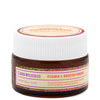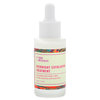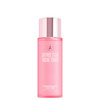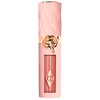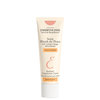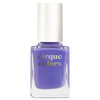
Up until now, my personal perfume philosophy has gone something like: “who cares, IT SMELLS GOOD.” But lately I’ve been trying to educate my sense of smell, so that I can know exactly what my nose is telling me when I sniff something new. And so that I can accurately identify fragrance notes. Haven’t you always wanted to be able to say: “Is that a whiff of jasmine? Do I detect a touch of amber?” Me too. We already investigated some common fragrance ingredients here, and decided to expand on that list with a handful of other curious scent substances.
Tuberose

Tuberose is sort of a hot controversy in the perfume world—it’s usually a love-or-hate-instantly sort of situation. Insanely sweet, almost too sweet, tuberose is an intense headrush of gorgeous floral scent...mixed with something rotten. Described by some as having “carnal” notes, ripe tuberose has a sort of fleshy, sweet-decay scent running underneath its heady vibe. It’s weird. It’s strong. I love it.
Where it comes from:
Admittedly, I thought tuberose was a rose. I pictured a giant, neon-pink velvet rose exploding in a garden on a hot summer night. In reality, it’s a small white flower that perfumers pick when it’s still in bud form. It takes more than 2,500 pounds of these blossoms to make less than eight ounces of tuberose absolute, which makes it extraordinarily expensive. Natural tuberose is so notoriously difficult to control in fragrances that today, synthesized versions are used more frequently. The perfume_ Fracas_ by Robert Piguet famously harnesses this flower’s overwhelming power.
Ambergris

Cured ambergris smells sweet and strange and like nothing else. It’s definitely animal-esque, but it also smells like the ocean and something else familiar, like a scent you once knew well, but forgot about, and are now trying to place. It’s nice-funky, super expensive, and used in small amounts as a fixative in perfumes.
Where it comes from:
Welcome to another chapter of “How did anyone EVER figure out how to use this for perfume?” I cannot, canNOT wrap my head around this one: ambergris is a biliary secretion from the inside of a sperm whale’s intestines, that’s designed to protect the whale’s insides from any sharp objects it might have eaten (bones, the beaks of giant squids). In short, it’s a waste product from the whale’s body, which is...drumroll please...excreted or vomited out. Hooray. Rare and expensive, ambergris is only useable when it’s cured—that is, when it’s been floating in the ocean for 20 to 30 years and become hardened. It washes up on beaches all over the world. Today we almost always use synthetic ambergris. The genuine form is illegal to have, buy, and sell in the United States, because sperm whales are a threatened species.
Bergamot

We know bergamot, right? It’s the main strange, sharp, fruity aroma in Earl Grey tea. To me, bergamot smells exactly like Froot Loops, but no one else seems to be with me on that when I bring it up. It’s a bright, semi-mysterious citrus, meaning that it smells both orangish-lemonish and kind of spicy at the same time.
Where it comes from:
I really don’t know what I was picturing here, but I was surprised to discover that bergamot is a fruit. A green, inedible citrus fruit that mainly grows in southern Italy, to be exact. Bergamot is cultivated solely for use in perfume and tea, and that characteristic scent is extracted from its bitter peel in the form of essential oil.
Vanilla

We all know what vanilla smells and tastes like—cookies, vanilla ice cream, and the like. Super-sweet and warm, vanilla is as popular in perfumes as it is in baked goods. You’ll find one-note vanilla scents as well as complicated creations that include vanilla to “warm up,” or to make a blend softer, more familiar, and more comforting.
Where it comes from:
Vanilla is the seed pod of the vanilla orchid. The pods grow from yellow orchid flowers that are painstakingly hand-cultivated and then dried for several months. Because it’s so time-intensive to grow and harvest real vanilla, it’s the second-most expensive spice in the world, ranking just under saffron on the pain-in-the-ass scale. And because it’s so expensive, we, as consumers, rarely get the real thing—we get the synthetic version of vanilla in most perfumes, which is called vanillin. Which smells just as good, just a little less complex.
Photo Credit
Tuberose: Forest & Kim Starr
Ambergris: Peter Kaminski
Bergamot: Klaus Reger
Vanilla: B Navez
You Might Also Like
-

Candles & Home Scents
The Wacky Candle Trend That’s Going Viral
- 1
-

Fragrances
Mother’s Day Gift Guide: Find the Perfect Perfume
- 233
-
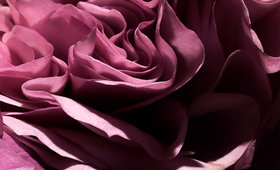
Women's Fragrance
Find Out Which Tom Ford Fragrance You Are From His Private Rose Garden Collection
-
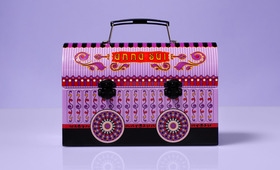
Fragrances
The New Limited-Edition Goodies From Anna Sui You Won’t Want to Miss
- 189
-
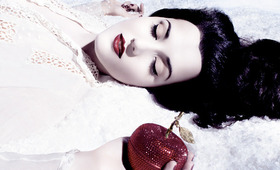
Candles & Home Scents
Candle Curiosities
- 82
-

Fragrances
Victoria's Secret Angels' Beauty Secrets
- 199
-
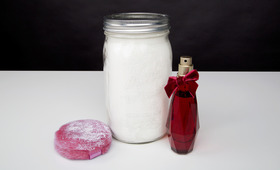
DIY
DIY Perfumed Body Powder
- 2769
-

Fragrances
Spotlight On: Caron Perfumes
- 16






